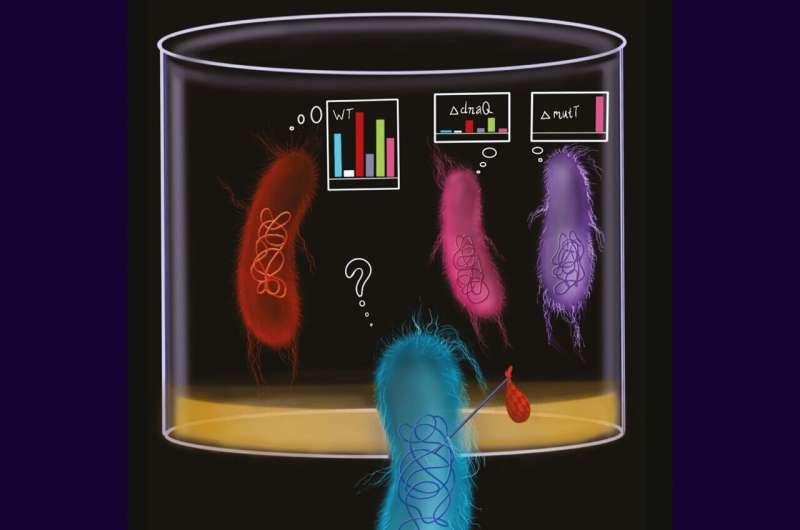This article has been reviewed according to Science X's editorial process and policies. Editors have highlighted the following attributes while ensuring the content's credibility:
fact-checked
peer-reviewed publication
trusted source
proofread
Laboratory and natural strains of intestinal bacterium turn out to have similar mutational profiles

Understanding mutational processes in a cell offers clues to the evolution of a genome. Most actively, mutation processes are studied in human cancer cells, while other genomes are often neglected.
A research team examined and compared the overall range of mutations in laboratory and natural E. coli (intestinal bacterium), concluding that they are practically indistinguishable. The results are presented in the Genome Biology and Evolution journal.
"Mutations occur either in the process of replication—copying DNA, or when 'repairing' DNA due to strand breaks or other disorders. The repair system can also make mistakes.
"Different replication and repair systems make different mistakes, and they depend on the context. Three nucleotides are typically examined: the one where the mutation has occurred, and two on the right and left sides of it.
"A typical set of mutations, together with the contexts specific to a given system, is called a mutational signature. For example, humans have mutational signatures of UV exposure and smoking that are characteristic of certain cancers," said the head of the study, Professor Mikhail Gelfand, the director of Skoltech's Bio Center.
The team conducted a first-ever study on the mutational profile of E. coli—the total of mutational signatures of replication and repair systems. The first step was to test the task on high school students at the Summer School of Molecular and Theoretical Biology, where researchers also got in touch with Indian colleagues working experimentally on the same problem.
"Our partners from India provided data on E. coli with disrupted replication and repair systems. From them, we were able to extract pure mutational signatures characteristic of different systems, and then decomposed the mutational profiles of E. coli into signatures and understood which systems contribute to mutations more," Gelfand continued.
The scientists also used experimental data on the long-term evolution of E. coli. This lab study, which has been ongoing for over 30 years, is led by Richard Lenski. The mutation profile of laboratory strains was compared with that of natural strains.
"We found that these profiles are similar. The laboratory strain does not live in conditions that are similar to those in nature, so this result is unexpected. In addition, the results argue against the idea that the evolution of E. coli in the natural environment includes alternating episodes of normal slow evolution and shorter episodes of accelerated evolution in a hypermutable mode.
"On the contrary, during the evolution of natural strains of E. coli, the contribution of atypical mutation regimes to the overall accumulation of mutations is insignificant," Gelfand said.
More information: Sofya K Garushyants et al, Mutational Signatures in Wild Type Escherichia coli Strains Reveal Predominance of DNA Polymerase Errors, Genome Biology and Evolution (2024). DOI: 10.1093/gbe/evae035
Journal information: Genome Biology and Evolution
Provided by Skolkovo Institute of Science and Technology




















